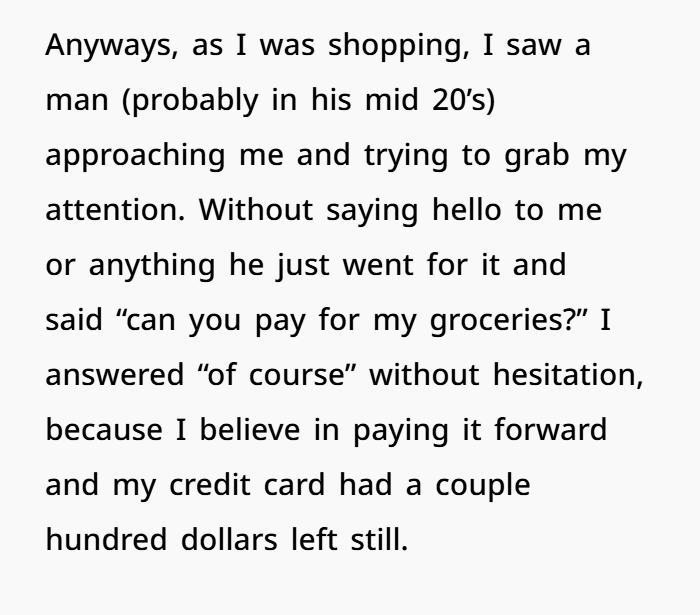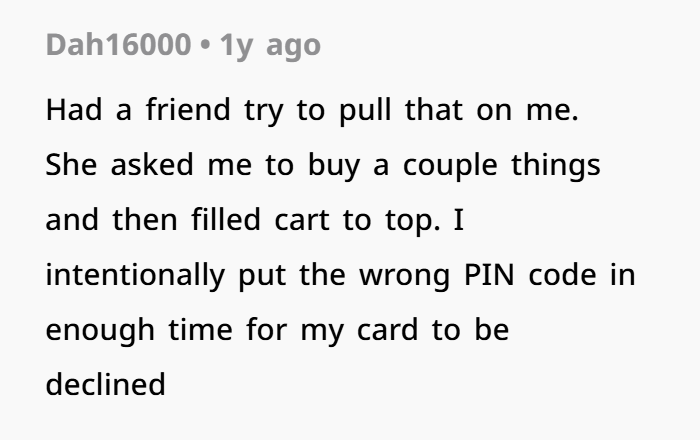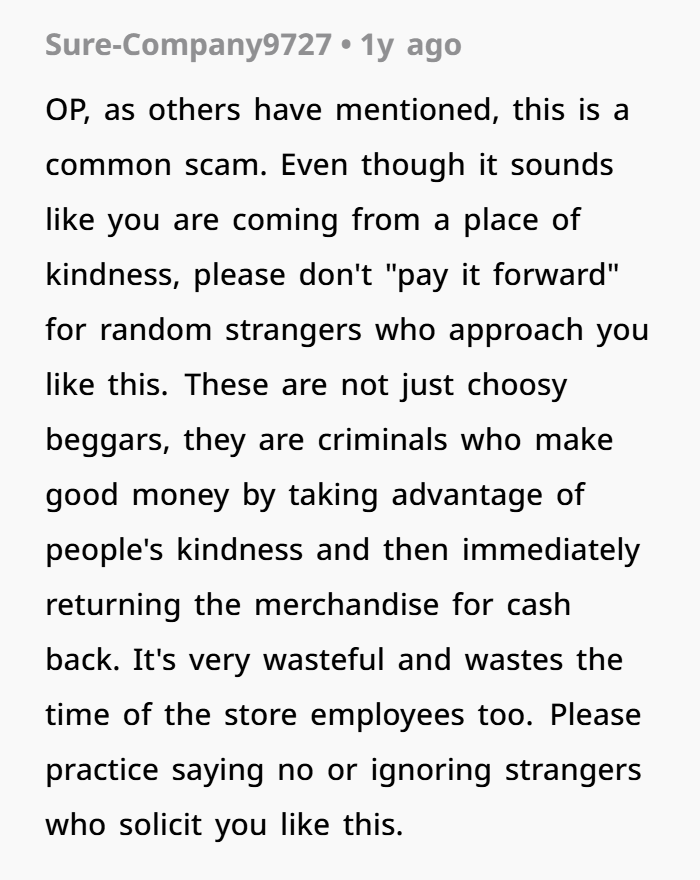Man Assumes Rich-Looking Woman Will Pay for His Groceries She Vanishes Instead
What began as a simple grocery run before a social event turned into a bizarre encounter when a well-dressed woman, projecting affluence due to her polished appearance and faux designer bag, became the target of an audacious request. A man—clean-cut, stylish, and seemingly well-off himself—approached her with an unexpected plea: would she pay for his groceries? Moved by a spirit of paying it forward and bolstered by a modest balance on her credit card, she agreed. But what unfolded next revealed not desperation, but deception.
The same man, rather than returning with a few essential items, was later spotted with a cart overflowing with goods, clearly intending to exploit her kindness under the guise of need. The surreal moment forced a swift retreat, exposing the darker side of social perception, grocery store scams, and how looking financially stable can inadvertently make one a target for manipulation.
Paying for someone’s groceries is a simple, kind act

But one woman was surprised when a man loaded up his cart after she agreed to pay








The Hidden Cost of Generosity—When Kindness Meets Exploitation
In today’s world, where economic disparities are increasingly visible, acts of kindness often shine as beacons of hope. However, these gestures can sometimes be manipulated by individuals seeking to exploit the goodwill of others. The incident described—a well-dressed man requesting a stranger to pay for his groceries, only to return with a cart overflowing with items—serves as a poignant example of this exploitation.
The Anatomy of a Grocery Store Scam
This scenario is not isolated. Similar tactics have been reported across various regions, where individuals feign neediness to take advantage of unsuspecting shoppers. According to FinanceBuzz, scams in grocery stores have evolved beyond simple thefts to more sophisticated cons, such as the “in-store scam,” where individuals ask for help purchasing essentials like diapers or baby formula, only to return the items for cash later.

Moreover, the “gift card scam” involves scammers persuading shoppers to purchase gift cards under the guise of needing assistance, only to misuse them for personal gain. These scams prey on the empathy of individuals, turning their altruism into a tool for deceit.
Psychological Manipulation and Social Engineering
The success of such scams often hinges on psychological manipulation. Scammers may present themselves as well-groomed and articulate, defying the stereotypical image of someone in need. This incongruity can disarm potential helpers, making them more susceptible to manipulation.
Furthermore, societal norms often discourage confrontation, leading individuals to comply with requests to avoid appearing rude or unsympathetic. This social engineering exploits the human desire to help, transforming it into a vulnerability.
Economic Implications and the High Cost of Living
The backdrop of these scams is the rising cost of living, which has strained household budgets. According to the U.S. Bureau of Labor Statistics, the Consumer Price Index for All Urban Consumers (CPI-U) increased by 0.4% in March 2025, reflecting ongoing inflationary pressures.
In such an environment, individuals are more cautious with their spending, making the exploitation of their generosity not only unethical but also financially damaging. The emotional toll of being deceived adds to the monetary loss, fostering distrust and cynicism.
Legal Perspectives and Consumer Protection
From a legal standpoint, these scams may constitute fraud or theft, depending on the jurisdiction and specific circumstances. Victims can report such incidents to local law enforcement or consumer protection agencies. However, the transient nature of these scams often makes prosecution challenging.
Retailers have also taken steps to mitigate such scams. For instance, some stores have implemented policies limiting the return of items without receipts or monitoring gift card purchases more closely. These measures aim to protect both consumers and businesses from fraudulent activities.
Community Awareness and Preventative Measures

Raising awareness is crucial in combating these scams. Communities can benefit from educational campaigns highlighting common tactics used by scammers. Sharing experiences, like the one described, can serve as cautionary tales, empowering others to recognize and avoid similar situations.
Additionally, individuals can adopt preventative measures, such as:
- Setting Boundaries: Politely declining requests for assistance when unsure of the individual’s intentions.
- Offering Alternatives: Directing individuals to local charities or food banks equipped to provide support.
- Staying Vigilant: Being aware of one’s surroundings and skeptical of unsolicited requests in retail environments.
Readers were surprised at the man’s audacity









Balancing Compassion with Caution
While generosity remains a commendable trait, it’s essential to balance compassion with caution. By staying informed and vigilant, individuals can protect themselves from exploitation while continuing to support those genuinely in need. Sharing stories and knowledge within communities fosters a collective resilience against such deceptive practices, ensuring that kindness is not weaponized but remains a force for good.


